6 Emerging Artists We Love from Artistellar
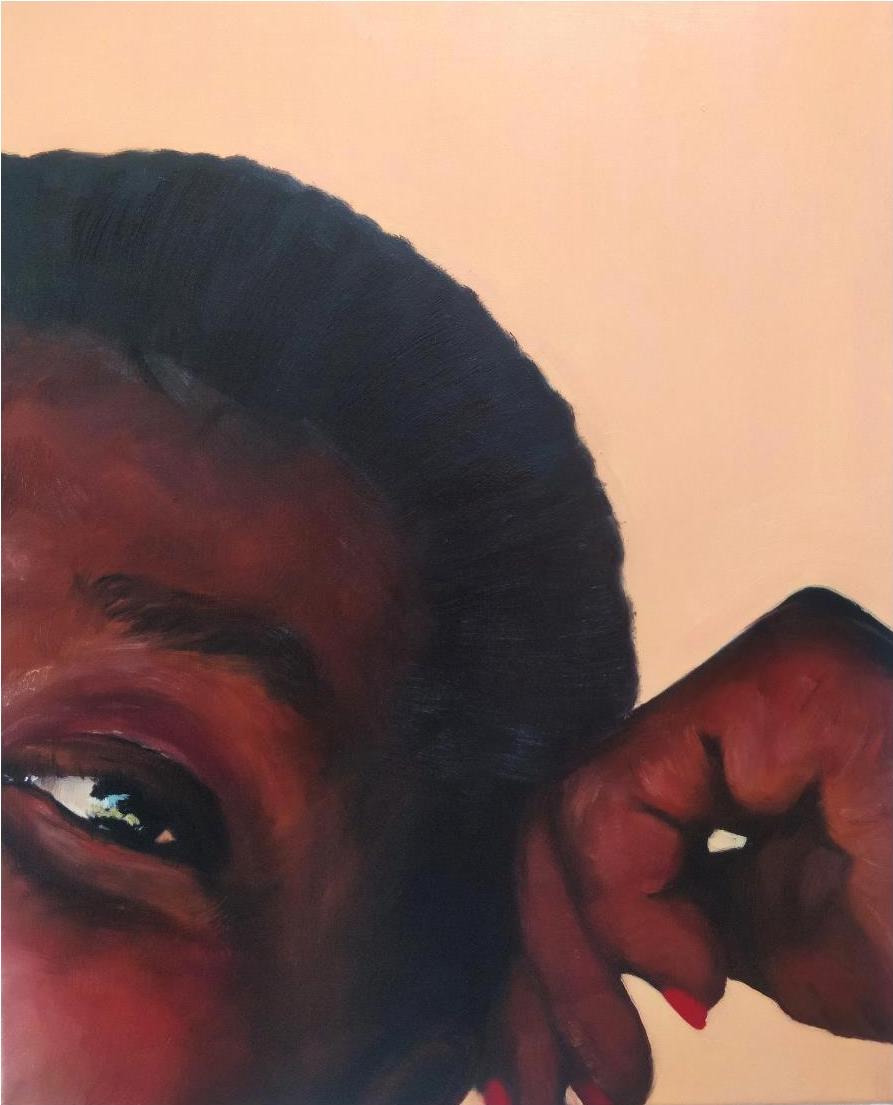
An in-depth look into a few emerging artists from curator Adele Smejkal’s new platform, Artistellar, whose exhibition TwentyTwenty Women is on view until 23 November.
TwentyTwenty Women is a show of six women artists of the 2020 emerging art scene, inspired by the Ninth Street Women book of chronicles of women who dared to enter the male-dominated world of 20th-century abstract painting as artists, not as muses. Sixty years later, women artists’ positions in the art scene have shifted and evolved along with the entire art world. But here are female artists again facing new challenges and issues imposed by today’s global world. The women of TwentyTwenty presents today’s emerging female talents, their unique characters, and artistic approaches. Across various painterly techniques, these women artists deal with today’s world’s themes and issues, such as cultural and gender identity, ethnicity, power, and intimacy.
The poet Adrienne Rich wrote: “For spiritual values and a creative tradition to continue unbroken, we need concrete artifacts, the work of hands, written words to read, images to look at, a dialogue with brave and imaginative women who came before us.” Let’s pave the way for future generations by highlighting the importance of today’s emerging artists.
Based in London, art dealer Adele Smejkal aims to bridge the gap between the classic brick and mortar gallery experience and online art e-commerce. Here are some of our favorite artists to look forward to from the exhibition.
1. Margaux Derhy
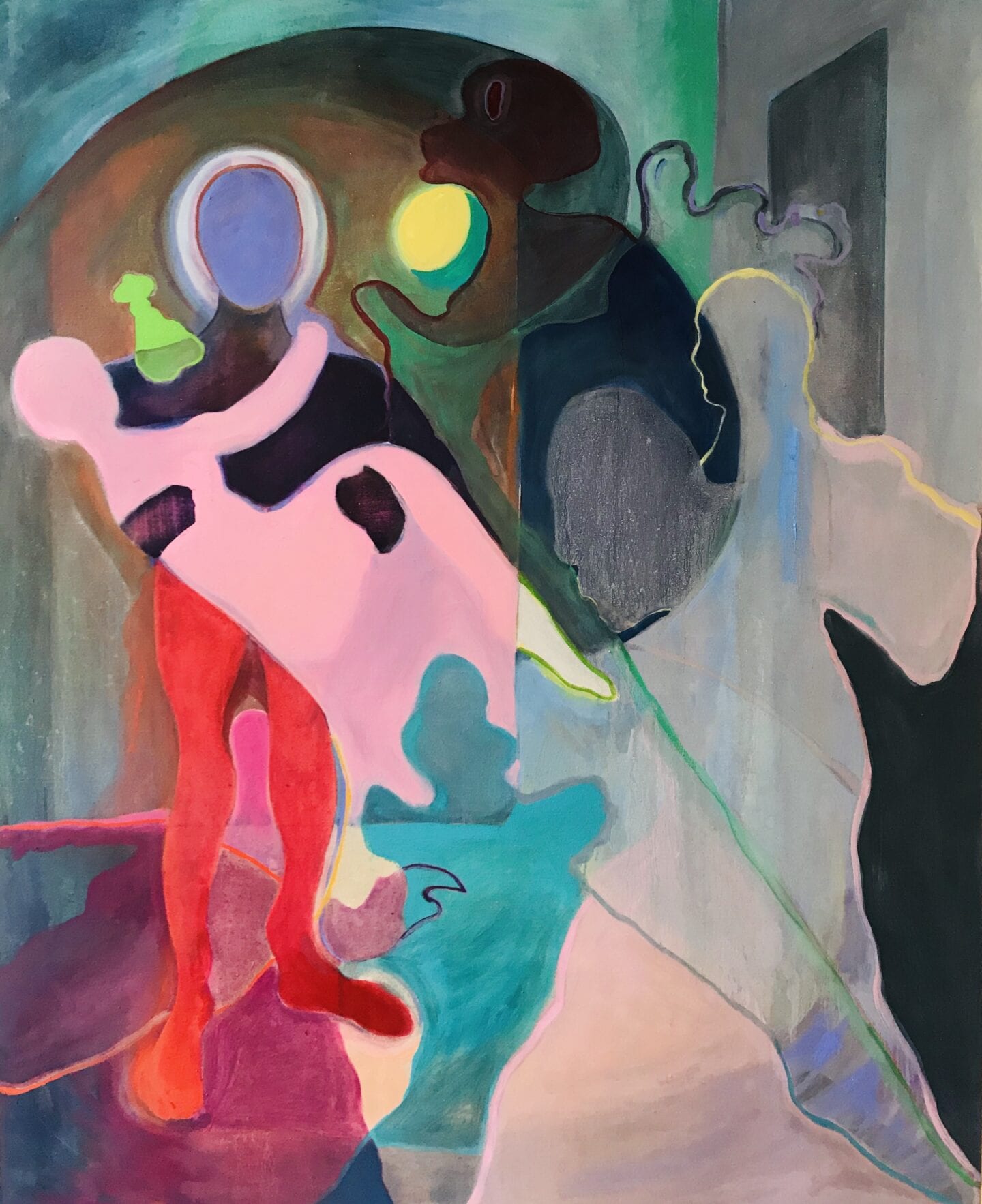
When observing Margaux’s work there are two elements that are deeply linked: human psychology and pathos, inspired as a result of the artist’s fascination with the work of psychologist Elizabeth Loftus on human cognition, and the pathos or profound expression of the feelings we observe in Italian Renaissance artists.
In One and also two… more it is remarkable the impression of the essence of what a memory is: a dreamy and vague sensation where details are lost in the consciousness of the intellect. Memories, as well as dreams leave us inaccurate perceptions about a reality that we cannot assure; how many people were in a certain room? What were their reactions? All these perceptions are reflected in the artist’s work through blurred colors and ephemeral shadows that are lost in oblivion, leaving as the only testimony, the emotion or feeling that shook the soul.
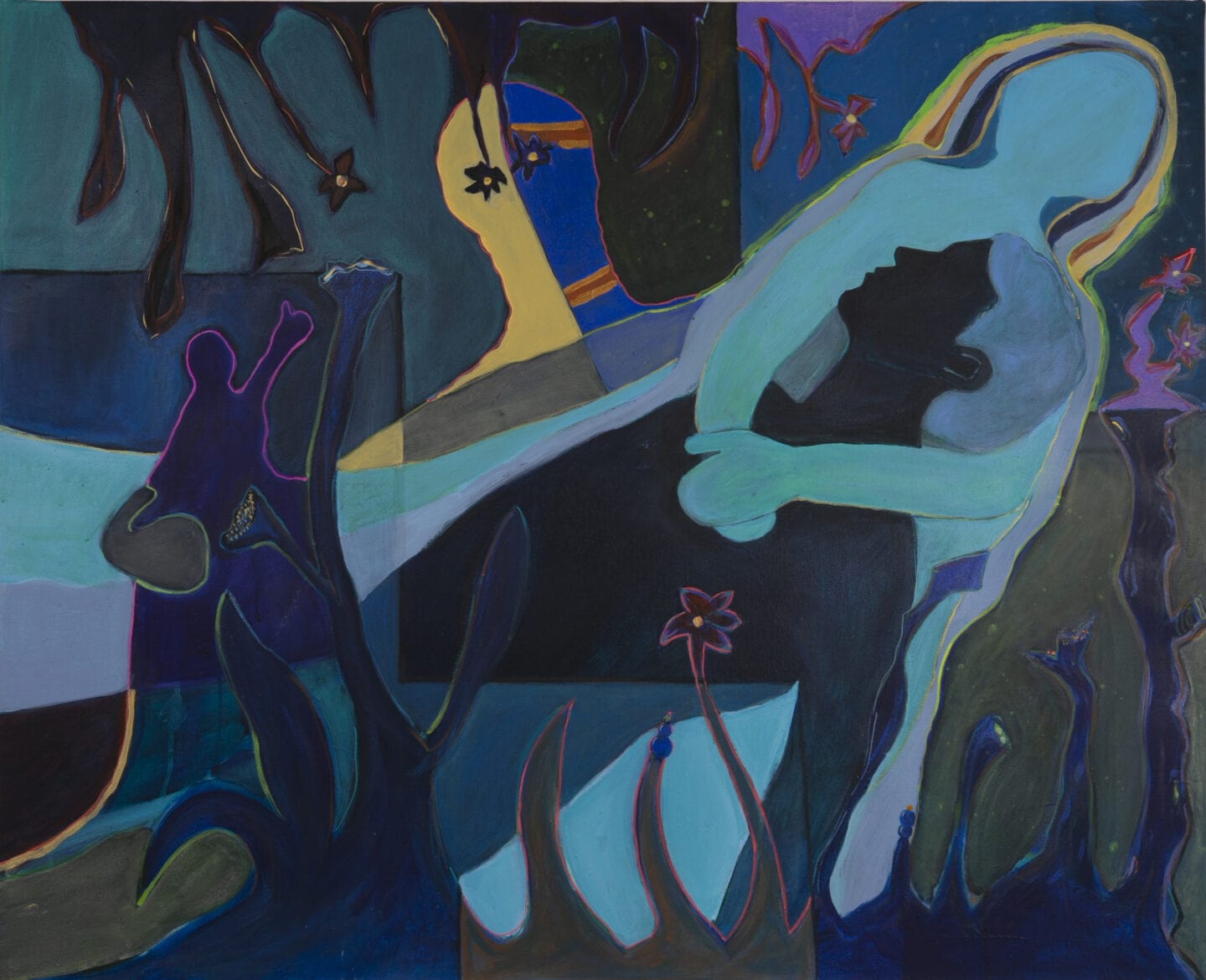
On the other hand, the work The Pieta and the Fantastic delves more into sadness and the contemporary adaptation of classic works of religious iconography. Reflecting feelings without drawing defined lines on the faces of the characters but that the viewer is able to capture.
2. Winnie Seifert
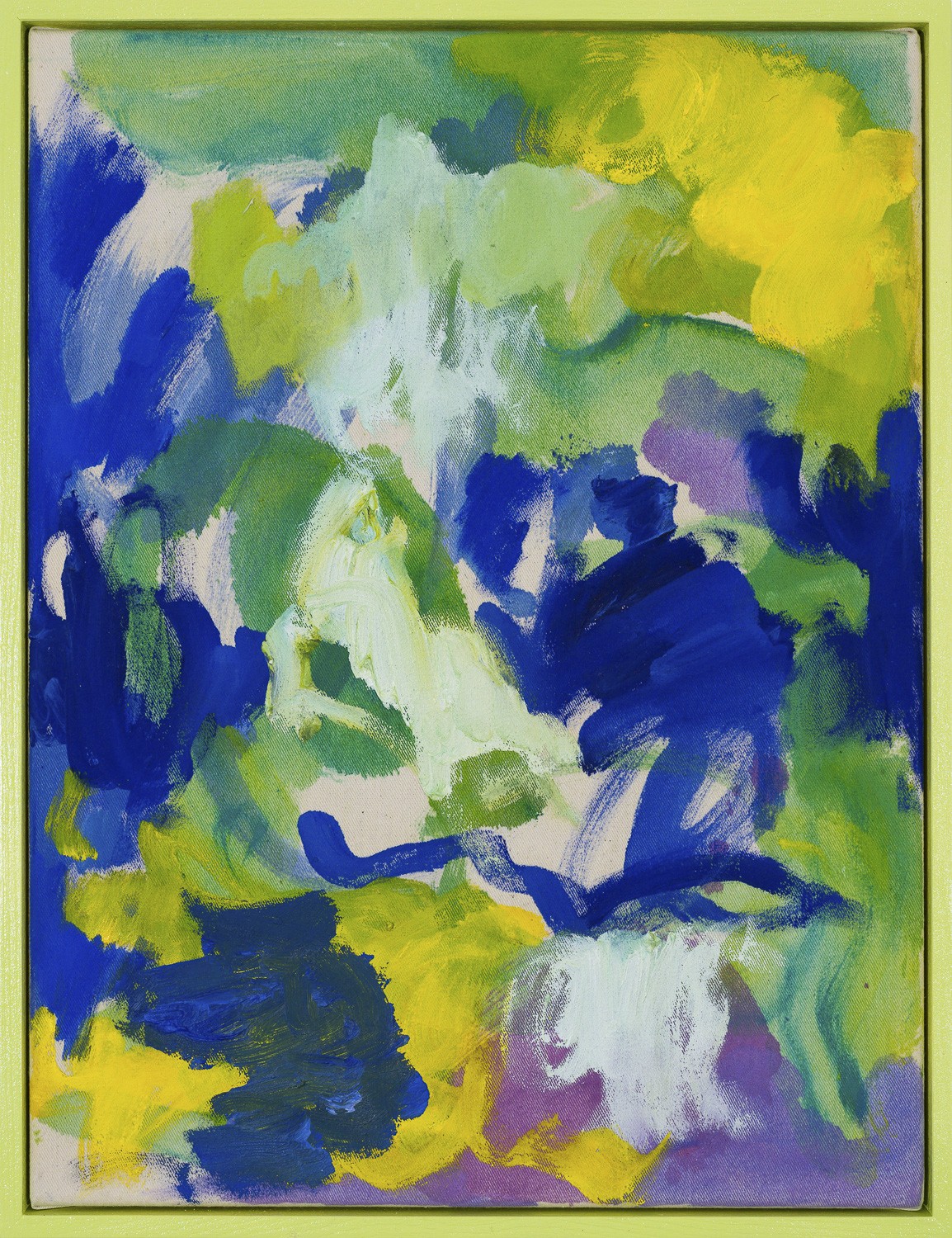
In the artist’s works, abstraction is the real protagonist as the main form of expression of feelings and emotions. In the words of the artist herself, “abstraction is the only way to discover the true intention of the artist.” The colors and the gesture of the stroke in the painting are the authentic communicators of realities. Taking the appropriate distance, her works evoke elements and pictorial, sensations of Monet’s nympheas. Scaping from a clearly figurative pictorial world to delve into sensations far removed from the world. The pictures are rebellious and anarchic, direct in a subjective way, and speak out without any trick and masquerade. This amalgam of colors is contrasted with Anita, with warmer tones and a more intimate tint. The strength of the work lies in the aura that a person projects perhaps the protagonist of the work.
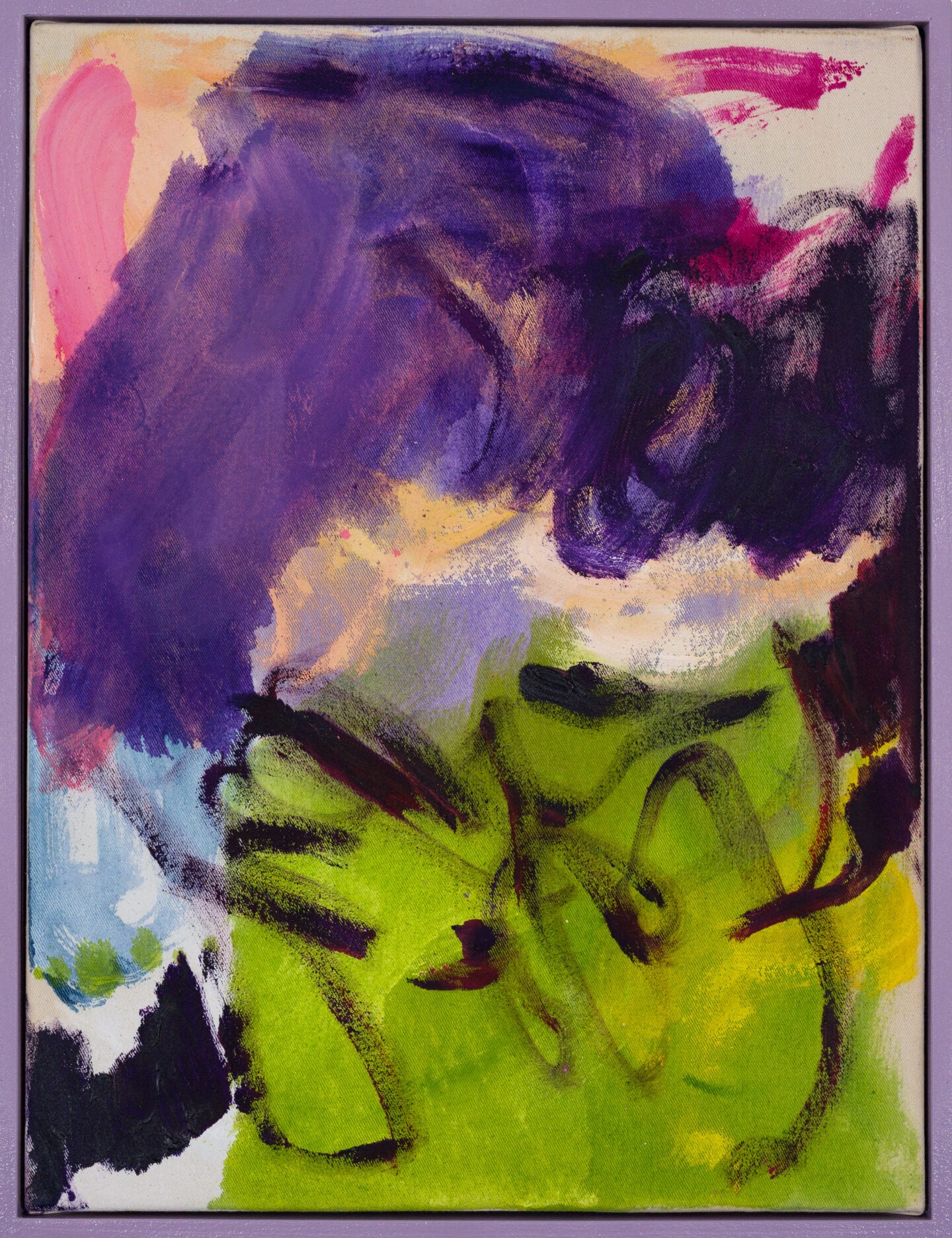
3. Celia Rakotondrainy

The artist’s Malagasy origins are the|central theme of her work, a starting point to delve into the construction of cultural identity as a result of a series of collective and not individual experiences. Through her trips to Madagascar to her parents’ home, the artist completely identifies with the environment and the problems of her fellow citizens. The search for answer to identity is joined by the desire to show a Madagascar full of colors and rich in culture. Steering away from the negative stereotypes characterized in the French press, Celia shows the humanity of its people in everyday scenes. The impact of globalization makes established dogmas questioned, as well as old beliefs and traditions.
Le sourire aux yeux presents a clear contrast with the previous one, where a young woman smiles. The angle of this uncommon portrait is surprising where it is the smile that is drawn in the gaze that is guessed in the part that has not been portrayed. It is the hope of the liberation of the future of women in Madagascar with modern times and new customs. Again, as a parallel and signature of the artist, we observe the enhancement of the portrayed figure in contrast to a flat background in color and lacking in motif. The artist thus gives us to understand that the theme is not the main thing in her work, but the emotion on the faces of her fellow citizens, in the warmth of the moment of the portrait.
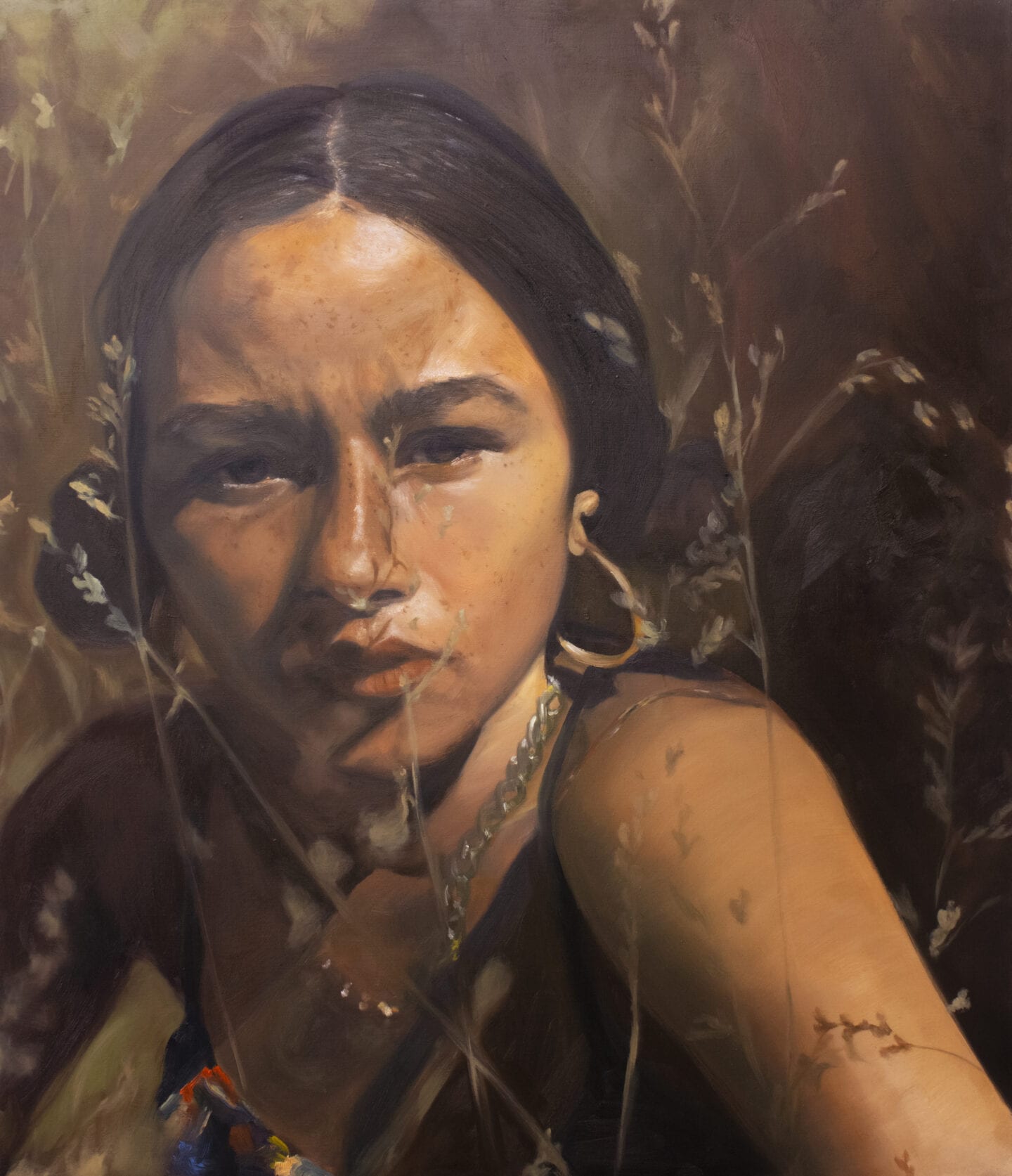
Peau d’or is portrait of French Malagasy singer Nirina Lune, with whom the artist collaborated on filming the entire painting’s process live for a song of the same name – “Peau d’or.” The project is in direct response to the movement Black Lives Matter. As mixed raced women, both artists have been on torn between being ‘white’ or ‘black’. Where do they stand? As the singer writes a song about skin colour, Celia paints her portrait beautifully rendering details of her facial expression and skin colour.
4. Sarah Longworth-West
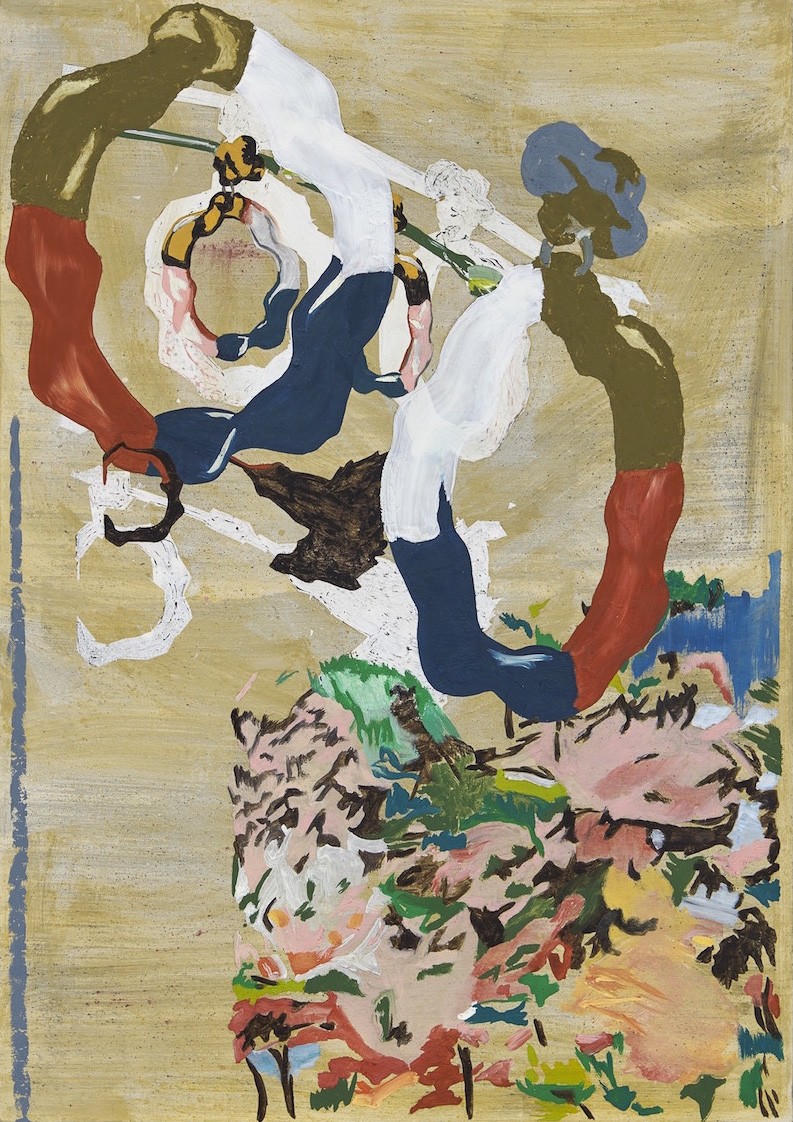
In her work, the artist takes us to a dystopian imaginary full of evaporated sensations and diluted colors that make up a dream like perspective w here the protagonists of the works mix with the background. The ambiguity of the figures is framed by the colors of the landscape w here references to specific places are barely existent
Only some objects are objectively represented as collage cutouts that are interspersed with sensations left by memories. In Apres apres there are several characteristics that make up the main review of the artist, such as the delimitation of the space of the canvas through parallel lines or the use of neutral colors. It is this superposition of colors that adds layers and textures to the figures represented, giving prominence to the essence of the work itself.
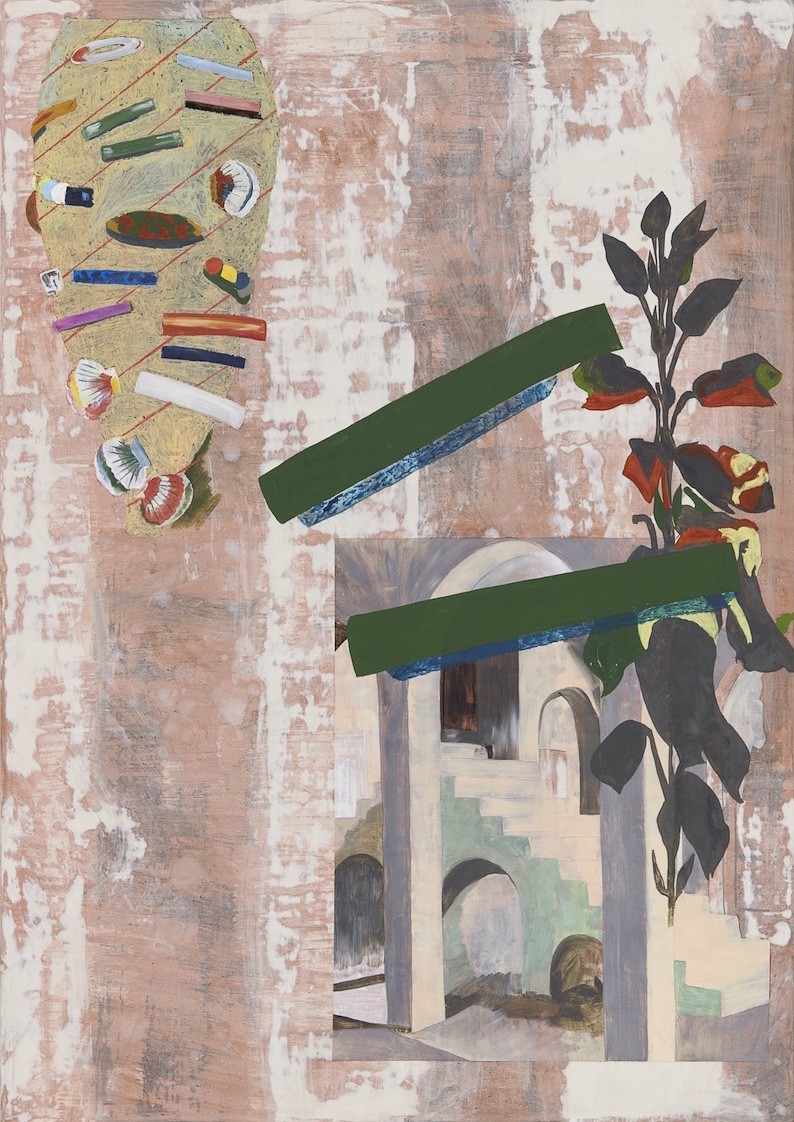
5. Xu Yang
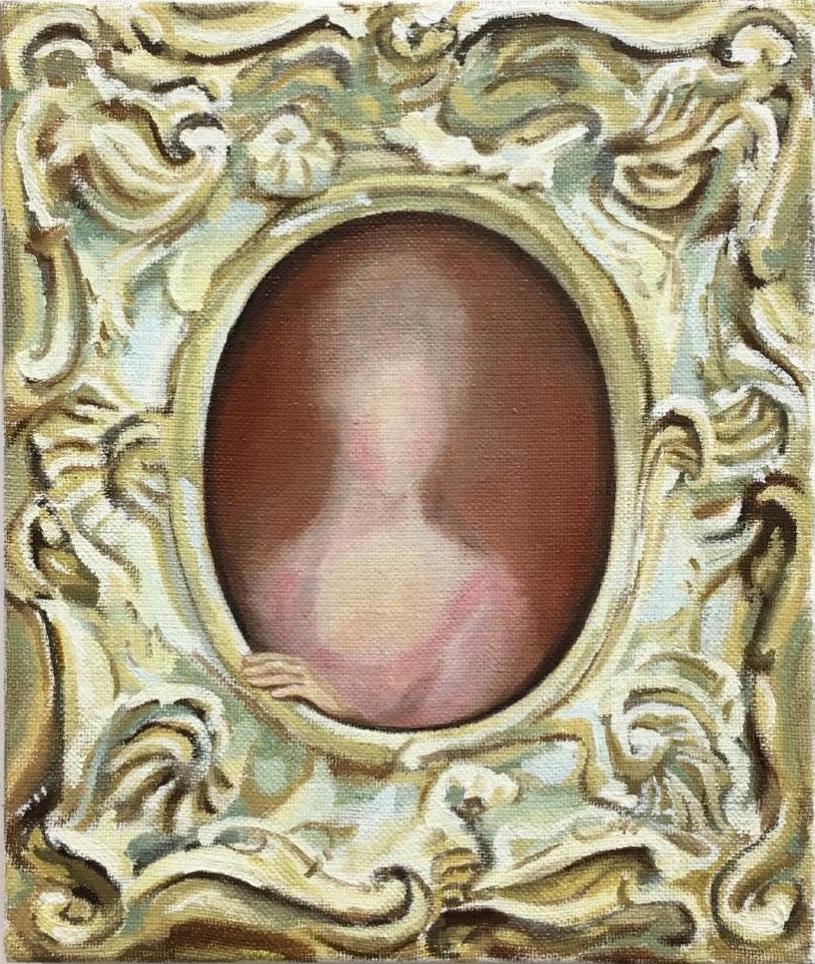
In her work Female identity, the artist draws parallels between the Rococo works of the French Baroque and the issues that are addressed today about sexuality and female identity. Starting from the collective imagination of the history of painting: fetishisms and fantasies, Xu explores different perspectives on gender. Her reinterpretation through ornate frames counteracts the simplicity of the gesture of her strokes that draw a smoky shadow on the portrait. Like a veil that covers what is not guessed or does not want to be elucidated, the brush strokes only provide a vague illusion of what may or may not be revealed in parallelism with society’s the taboos on sexuality and the female body throughout history.
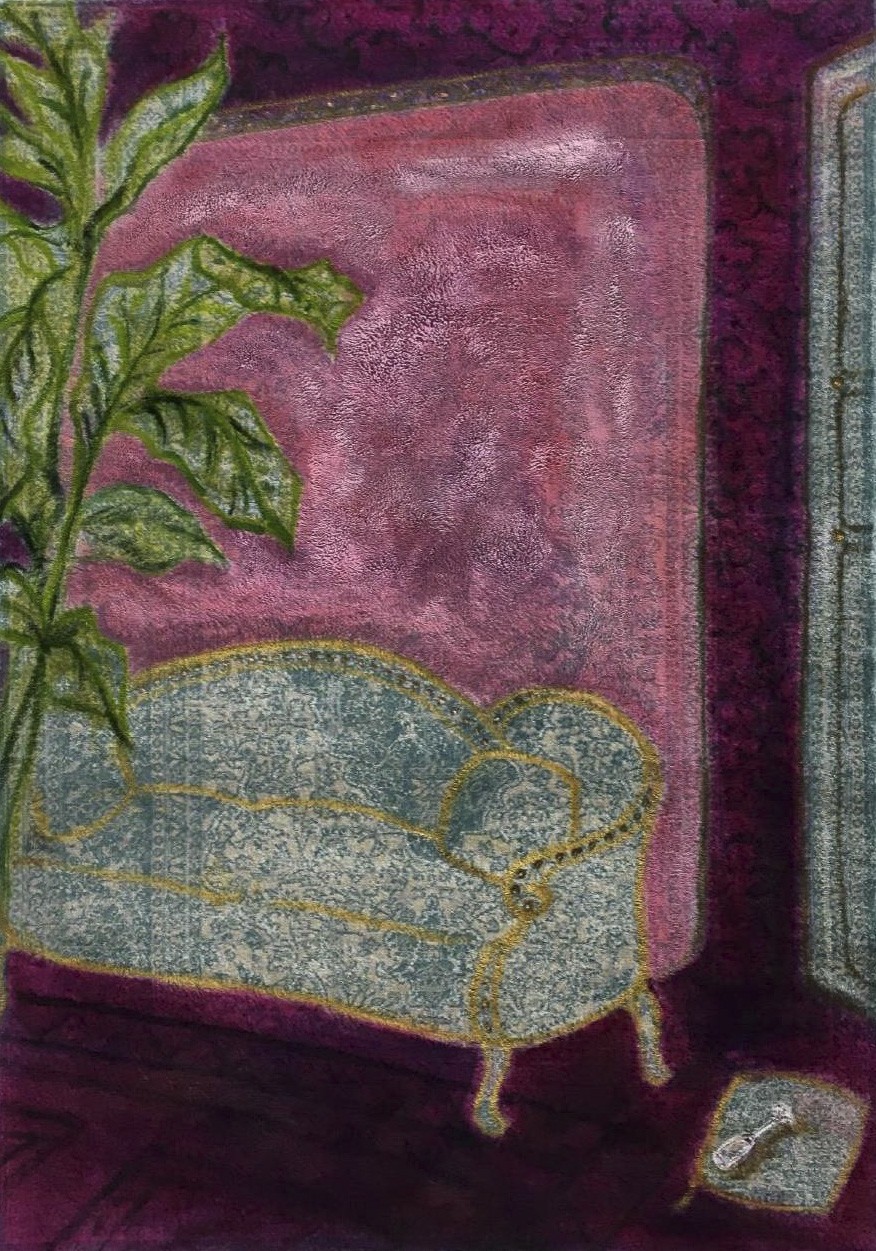
In this work with less blurred and more concrete lines we can see a room that is also typical of the great palatial halls of the XVIIIth century, a typical setting for a portrait of the time but whose title makes the viewer look back at the present where current events are intertwine with the scenarios of the past. Isolation, loneliness and the problems that derive from it make this work exhale humanity, nostalgia and sadness. Longing for a past that was better than any present moment and where sorrows are drowned with alcohol.
6. Victoria Cantons
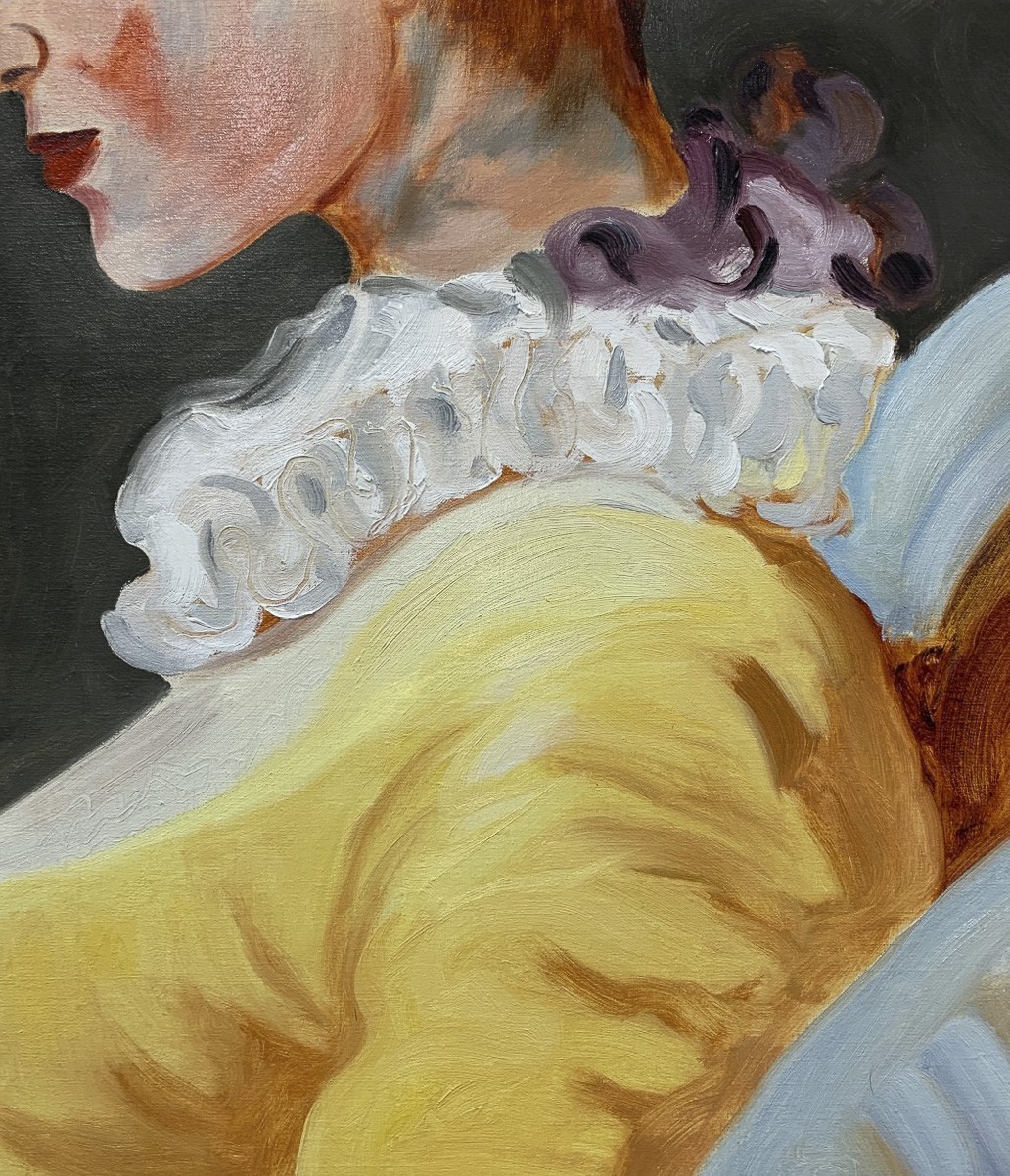
The context of human identity is what defends the work of Victoria. Being transgender, memories and their transition is the main source of inspiration for the artist’s work. It analyzes contemporary art trends and is imbued with the essence of great artists such as Pablo Picasso or Frida Kahlo. In Some things you shouldn’t get too good at or Where the sky and the big city meet (after Fragonard), the artist takes as a reference the painting Young Girl Reading by Jean Honoré Fragonard from where she analyzes the female representation in classic nineteenth-century portraits as a figure full of virtue, femininity and devoted to the home.
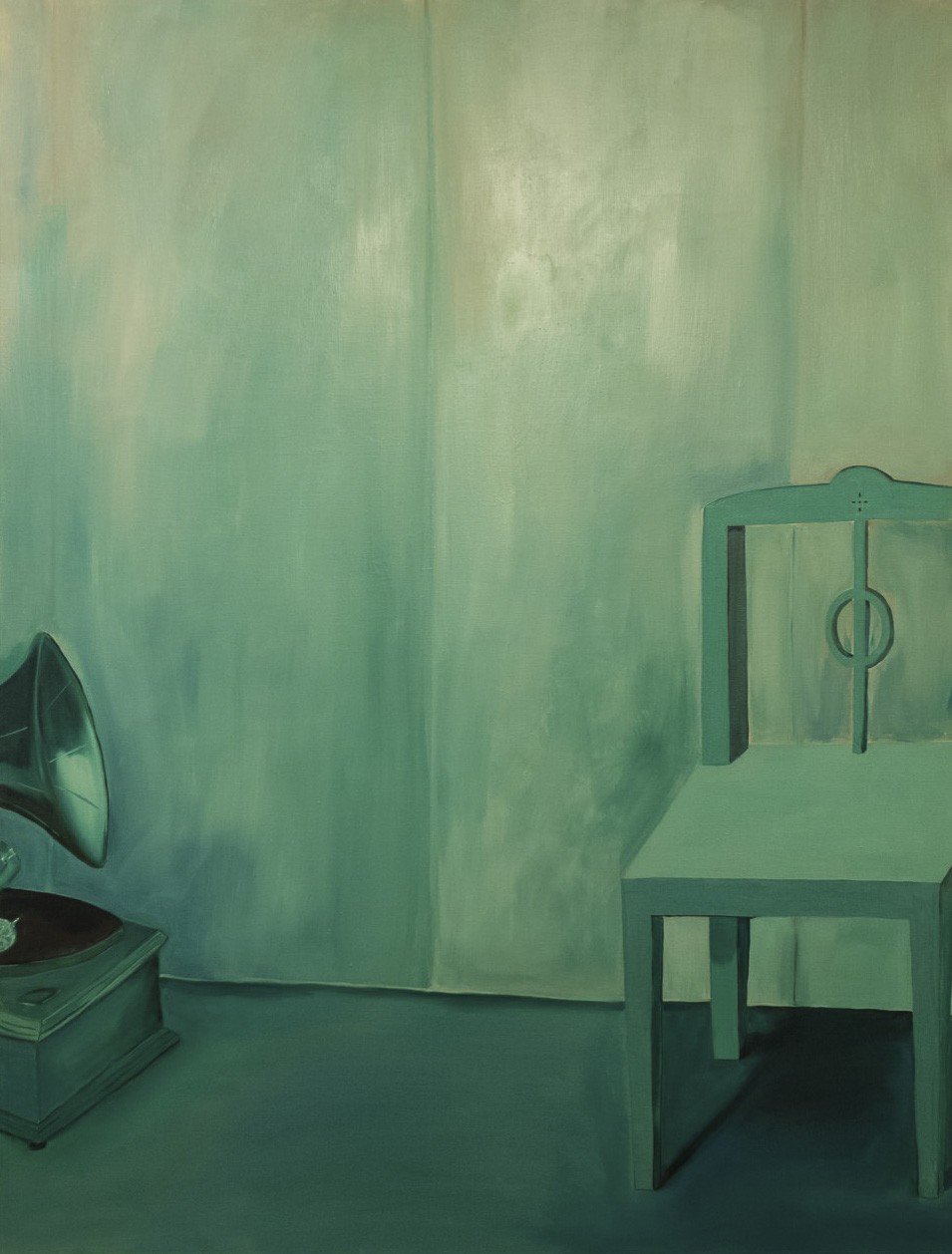
In Just because everything’s changing doesn’t mean it’s never been this way before,, the artist delves into transformation as an inherent characteristic of inanimate subjects and objects themselves. Going on to question the why and the origin of the status quo of what surrounds us Here, as in the mirror-themed works, the colors become flatter reflecting the artist’s own signature compared to the work above, where the contrasts and volumes appear more marked, delimiting contours.


